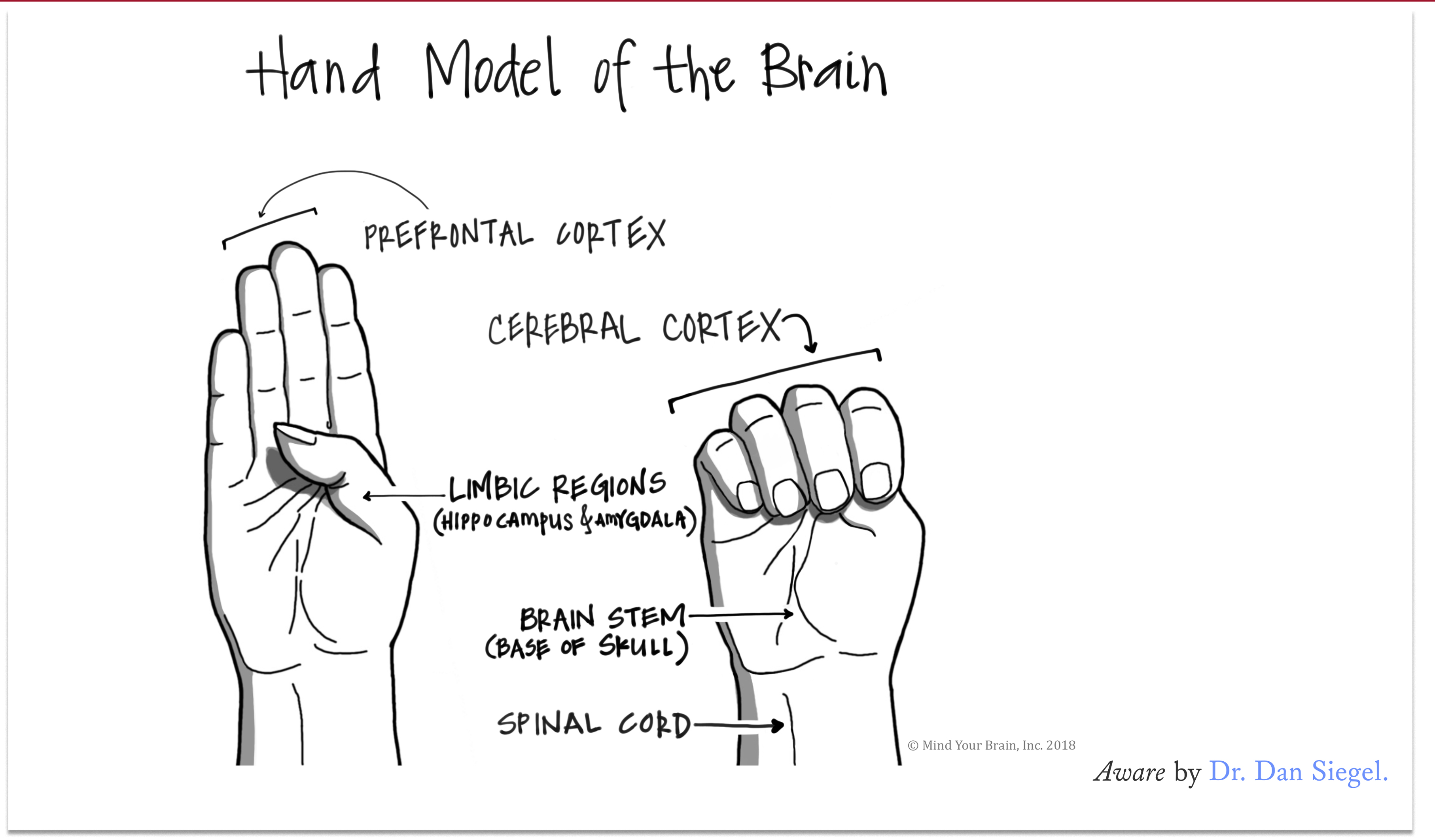By Carrie Gilfillan, Learning Strategist
In my work with students at Lakefield College School, I often approach the topic of mindfulness through the lens of attention. I was grateful to have had the opportunity to share this different way of thinking about mindfulness with our students during this week’s Mindful Moment, a weekly mindfulness practice in our Chapel programming.
Now, because I know the power of a good hook to grab attention I started out jokingly dedicating this week’s Mindful Moment to a student who, just the other week, in an overwhelmed moment, told me that they may punch something if another adult asks them if they practice mindfulness. While starting out this way was definitely a strategy on my part to gain the attention of a group of teenagers, it was this interaction that reminded me of how our kids need to understand that mindfulness is more than something you can use when you are in an emotional whirlwind.

A simplistic model can be very powerful. If you have never seen the hand model of the brain, I encourage you to Google it. It is a great way to talk to people of all ages about what happens when our limbic system, the very old and powerful part of our brain that controls things like emotions and the well-known “fight or flight” response, takes over and we “flip our lid”— or in other words, our cerebrum, home of our prefrontal cortex, needed for rational, logical, creative, and problem-solving thinking, goes offline and stops working. The best way to get our limbic system under control so that the rational part of our brain can come back online is to calm our physical body down. The easiest way to calm our physical body down is by controlled breathing. Pure science.
It’s important for us, as supportive adults at the school, to remind our students that we want to help them develop the skill of recognizing when their emotions are starting to grow and are on the verge of a takeover which could cause them to behave in ways that they may regret later. We also want to help them to be able to make the choice to calm down and to know how to do so.
But that is only one reason why mindfulness is so important.
The reason that top athletes, artists, entrepreneurs, executives, people who are rockin’ life, are practicing mindfulness is that they understand attention is a muscle, and building this muscle allows them to be their most focused, productive, efficient, and creative self. Once you are able to increase your efficiency and do your best work in concentrated time periods you are able to fill the remainder of your time with passions, connection, reflection, and recharge.
This is another very important reason why the adults in our community are advocates of mindfulness. We want our students to be their best selves.
The good news is that working out your attention muscle is not challenging. You simply need to choose to attend to something and every time you notice your attention has wandered you need to bring it back and try to attend again. It is the bringing back part that matters. I think this is where a lot of kids, and adults, get confused. I hear a lot of people say they are “no good” or “can’t do mindfulness.” What they mean is that they can’t clear their mind or keep their attention focused, but that is missing the point. Our minds wander. This is normal. Practicing mindfulness, doing an ‘attention workout,’ is all about bringing it back to attention. This is what matters—simply noticing that you are no longer attending to what you decided to attend to, bringing your attention back to that thing and then trying again. The hardest part is getting into the habit of practicing and building it into your routine.
The other upside is that there are lots of different and fun ways to practice. For this week’s Mindful Moment I shared one of my favorites. The attention task was to listen to the song being played over the speakers in the chapel. Students were told to try and focus on the lyrics and when there were no words, the melody – just to focus on following along with the words, not to try and devise meaning from the song or to try and make any sense of it. To help, I suggested students close their eyes and imagine one of those karaoke balls bouncing along with the tune. When they noticed their attention had wandered, they just had to bring it back to the song. Nothing more.
So go ahead and give it a try…pick a favorite song (or try the one we used—Rise by Eddie Vedder), get comfortable, close your eyes, imagine that bouncing karaoke ball and just try to focus on each word of the song—when your mind wanders, that’s okay, just bring it back and focus again. Remember, bringing it back is what matters…that and practice.
